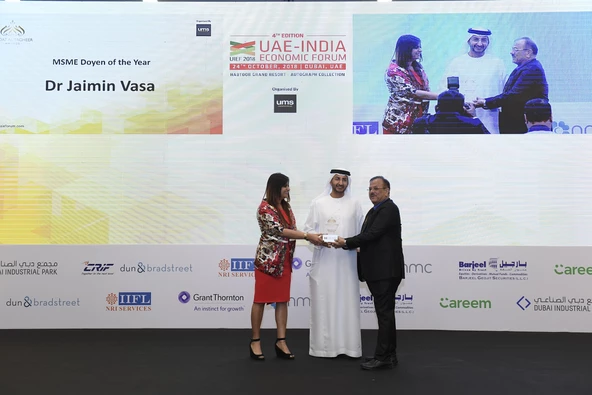July

USFDA announces new policies to advance development of safe and effective cell and gene therapies
Statement from FDA Commissioner Scott Gottlieb, M.D. and Peter Marks, M.D., Ph.D., Director of the Center for Biologics Evaluation and Research:
The FDA is witnessing a surge of cell and gene therapy products entering early development, evidenced by a large upswing in the number of investigational new drug (IND) applications. Based on this activity, we anticipate that the number of product approvals for cell and gene therapies will grow in the coming years, reflecting significant scientific advancement and the clinical promise of these new innovations.
We anticipate that by 2020 we will be receiving more than 200 INDs per year, building upon our total of more than 800 active cell-based or directly administered gene therapy INDs currently on file with the FDA. And by 2025, we predict that the FDA will be approving 10 to 20 cell and gene therapy products a year based on an assessment of the current pipeline and the clinical success rates of these products. During this period without a FY19 appropriation for FDA, we’ve been focused on making sure that we continue critical aspects of our work, to the extent permitted by law. At this time, for products covered by a user fee program, including cell and gene therapy products, our review of existing medical product applications and associated policy development is funded by limited carryover user fee balances. We’ll continue to update the public on how we’re approaching our work.
We’re working to expand our review group dedicated to the evaluation of these applications to keep pace with the rapid expansion in new product development. Our eventual goal is to add about 50 additional clinical reviewers to the group charged with overseeing the clinical investigation, development, and review of these products.
The activity reflects a turning point in the development of these technologies and their application to human health. It’s similar to the period marking an acceleration in the development of antibody drugs in the late 1990s, and the mainstreaming of monoclonal antibodies as the backbone of modern treatment regimens.
In the case of antibodies, it was a product innovation that sparked an inflection point in the advance of those products, after which antibody drugs became a mainstay of medical care. Specifically, it was the widespread adoption of safe and effective platforms for humanizing antibodies and, eventually, developing fully human monoclonal antibodies that weren’t rejected by the body’s innate immune system.
In the case of gene therapy, it’s similarly a product innovation that has marked an inflection point in the development of these therapies, and a surge in new product activity. In this case, it was the advent of safe and effective vectors for the delivery of gene therapy products, such as the adoption of adeno-associated virus (AAV) vectors.
The fact that product innovations are a key enabling advance in promoting the development of these products into effective therapies underscores the importance of advancing sound policy related to innovation around these product-related issues.
Gene therapy products now have the potential to cure intractable diseases, and fundamentally alter the trajectory of many other vexing illnesses. To advance these opportunities, the FDA plans to introduce additional new policy guidance and other advances in our drug development framework in 2019. Today, we want to take an opportunity to preview that policy agenda and offer some perspective on the focus of our policies over the coming year as it relates to these technologies.
First, we will work with sponsors to make maximum use of our expedited programs including regenerative medicine advanced therapy (RMAT) designation and accelerated approval. We believe that for gene therapy products that are offering meaningful therapeutic advantage over available therapies for a serious or life-threatening disease or condition, the accelerated approval pathway offers some unique opportunities.
For one thing, the accelerated approval pathway may offer a faster route to approval for new treatments, including potentially curative benefits in significant, unmet medical needs. But the pathway also offers additional authorities for FDA to require postmarket follow-up studies. Since many of the risks associated with gene therapy products relate to questions about the product’s durability and potential for rare instances of off-target effects, it may not be feasible to conduct pre-market trials that address all these theoretical risks in any reasonably sized study. Robust postmarket tools, such as those afforded to the FDA under the accelerated approval pathway, particularly for products granted RMAT designation, can help achieve the goal of developing a larger data set to address these theoretical risks in a timely fashion.
Second, we’re planning a series of clinical guidance documents related to different areas of active product development. Among the clinical guidance documents that we intend to advance include guidance documents for the development of gene therapy products for inherited blood disorders such as hemophilia, among others.
We also intend to develop a guidance document for providing recommendations on product development issues related to the development of gene therapy products for certain neurodegenerative diseases. Here the accelerated approval pathway may only be applicable in certain circumstances.
For example, we intend to propose guidance to address how the accelerated approval pathway may be used when the target of the gene therapy product is an underlying monogenetic change that causes a serious disorder not addressed by available therapy. In these cases, the gene therapy could offer the potential to alter or cure the underlying genetic defect that gives rise to, and causes the advance of, a disease.
Our guidance will also propose how a more traditional approach to drug development may be more appropriate if the gene therapy creates a genetic alteration aimed at treating the symptoms of a neurodegenerative disease, or potentially altering its course by altering the expression of a protein or enzyme believed to play a role in the advance of a disease. In these cases, the gene therapy wouldn’t be intended to cure the underlying condition but instead, affect its course or symptoms. We intend to explain that demonstrating the safety and benefits of such an approach could typically require a more traditional clinical study and recommend ways this can be achieved.
Other critical challenges also arise in the development of safe and effective cell-based gene therapies such as CAR-T cells, including the complexities associated with manufacturing these products in a safe, reliable and cost-effective way, and in a manner that allows for the efficient use of these products in the clinic. Our new guidance will recommend parameters for how innovators can introduce advances in manufacturing that promote the more efficient development and application of CAR-T therapies without necessarily requiring costly new clinical investigations. We intend to propose ways to help ensure the safety and effectiveness of the resulting products through available technologies and examinations, and when limited clinical bridging studies may be needed prior to approval of a change, possibly followed by the submission of additional clinical information supplied by real-world data after the change is introduced.
This category of guidance documents that we intend to develop will help advance scientific principles related to the efficient development of CAR-T and other cellular therapy products. The guidance that we intend to issue will promote a better understanding of the critical quality attributes and other factors related to product manufacturing. One of our goals here is to allow for the development of clearer parameters for when minor manufacturing changes can be made that wouldn’t require additional bridging studies. We will also be working with stakeholders and intend to hold a public meeting in the coming months to discuss ways to expedite the necessary clinical bridging studies when more than minor changes are introduced in the manufacturing process, but such changes do not represent a transformation to a fundamentally different product. We intend to introduce various topics, such as the refinement of genetic constructs and the introduction of more efficient cell culture methods.
We also intend to develop new guidance to continue to promote the efficient development of safe and effective cell-based regenerative medicine products.
Though we are very encouraged by the advances in science and clinical development in this field, we remain concerned at the FDA that a number of individuals working in this space are developing products that are subject to pre-market approval, but these individuals are operating outside of regulatory compliance and, in some cases, these products are creating potential significant safety concerns to patients based on how we believe the cell therapies are being manufactured and delivered to patients. In these cases, the manufacturers have failed to respond to the FDA’s request to have a dialogue with the agency about how to come into regulatory compliance. We plan additional enforcement actions in 2019 to address products that pose a significant risk of potential harm to patients.
At the same time, we are committed to continue to develop efficient pathways by which sponsors can come into regulatory compliance while working toward approval of a new Biologics License Application (BLA) for their products. To advance this goal, one guidance that we intend to issue this year will outline a proposed innovative trial design by which individual researchers can pool their clinical data after following a common manufacturing protocol, and thereby develop a more robust data set for purposes of gaining a BLA.
The idea here is to assist small sponsors, including academic investigators, who may not be of sufficient scale to conduct a clinical trial on their own, to band together with others similarly situated. These sponsors can then pool clinical data to demonstrate the safety and effectiveness of a product that is manufactured with a common manufacturing protocol and product quality specifications, and used for a common clinical purpose, but where the therapies are being delivered locally by different investigators and institutions. We already have consortiums of academic investigators who are in active discussions with the FDA about this proposed new approach. The guidance document we intend to issue will outline more clearly the recommended procedures for pursuing this novel approach.




Leave a Reply